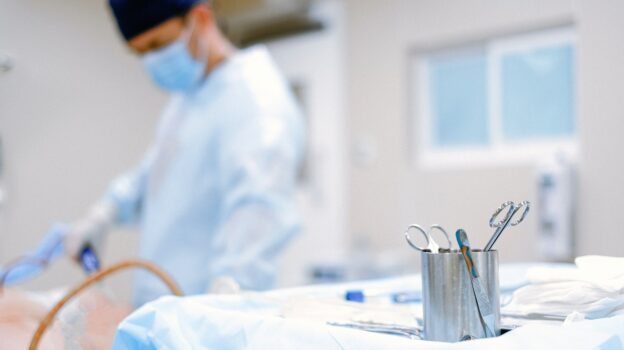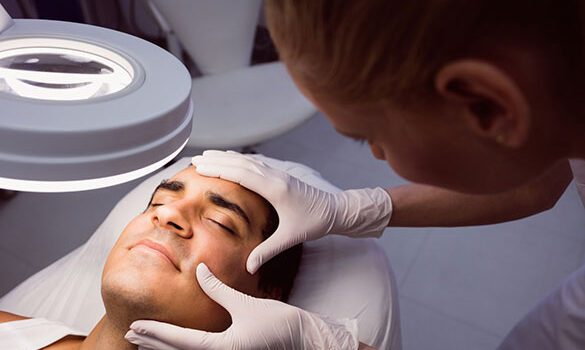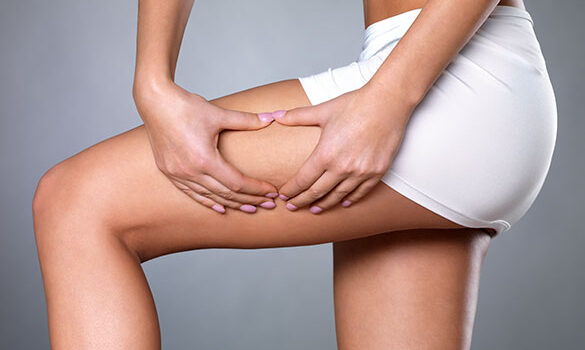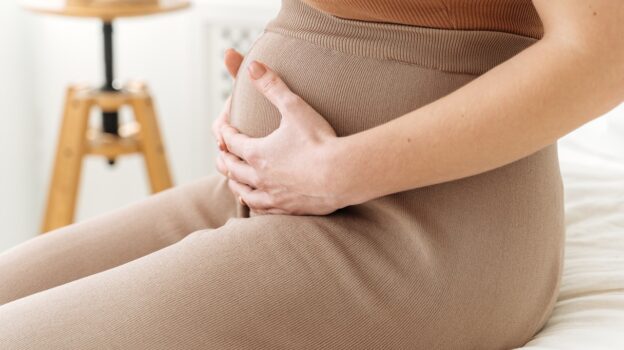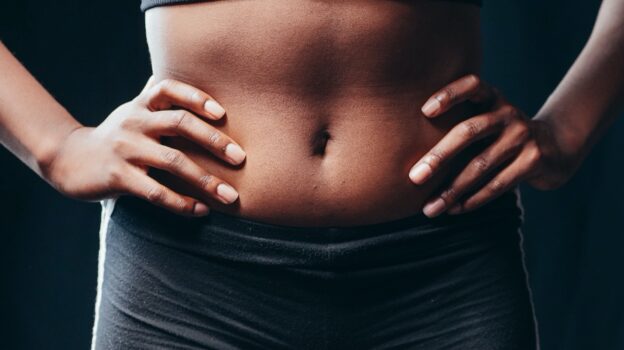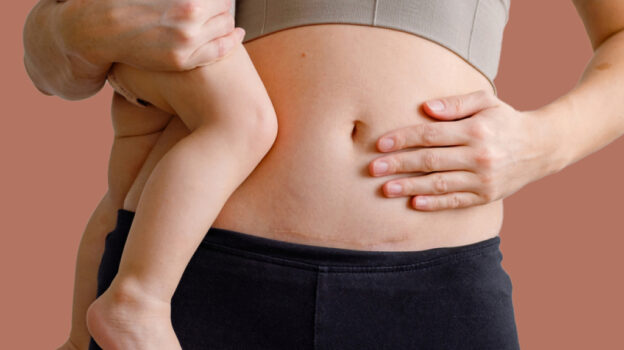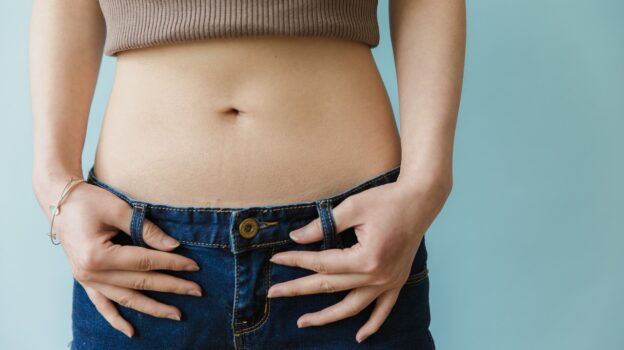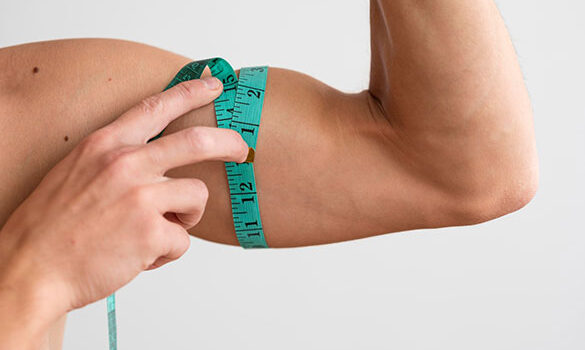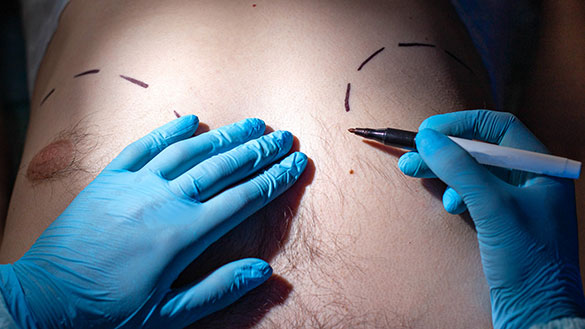Credit: RODNAE Productions via Pexels
There is no universal one-size-fits-all surgery. Rather, there are different procedures that are uniquely designed to meet individuals’ varying needs and lifestyles. Tummy tucks and liposuction, for one, are often categorized together because both focus on the midsection. The reality, however, is that these procedures differ in process, results, price, and overall approach.
If you are considering a tummy tuck or liposuction at our plastic surgery clinic in Mississauga, you can have peace of mind knowing that we will provide a preliminary consultation to identify your needs and work with you to determine the best procedure for you.
If you are deciding between a tummy tuck or liposuction in Toronto, consider the unique differences & advantages of each to help you determine the right procedure for you.
Tummy Tucks
An abdominoplasty (tummy tuck) is a surgical procedure designed to give patients a toned, contoured midsection. During a traditional tummy tuck procedure, a surgeon will make a horizontal incision above the patient’s pubic line to tighten the abdominal muscles and remove any excess skin and fatty tissue. In some cases, they might reposition the navel.
A major benefit of a tummy tuck is that there are different types available. Here are some of the variations available at GraceMed:
Fleur-de-Lis Abdominoplasty:
A fleur-de-lis abdominoplasty — also known as an inverted T abdominoplasty — is a version of the tummy tuck that makes a central vertical incision from the sternum to the pubic region. This technique helps to remove and tighten excess horizontal skin, making it ideal for patients that have excess skin on their midsection from weight loss or bariatric surgery.
Mini-Abdominoplasty:
A mini-abdominoplasty (mini-tuck) is a variation that involves a horizon suprapubic incision (below the stomach and above the pubic bone). The surgeon will not need to reposition the navel in this case. This procedure also requires liposuction in the abdomen.
A mini-tuck is an ideal option for patients that have a small amount of excess skin and fat that mostly sits at the lowest part of the abdomen.

Credit: Maksim Goncharenok via Pexels
The Advantages of a Tummy Tuck
Removal of Excess Skin:
One of the biggest advantages of tummy tucks is that they remove excess, sagging skin from around the midsection. This can be incredibly helpful for patients who have undergone dramatic weight loss and would like to address the loose skin that sits around their stomach. This quality also makes tummy tucks a common addition to mommy makeover procedures since many women struggle with having loose, puckered skin long after they’ve delivered a child.
Stronger Abdominal Muscles:
A tummy tuck is also beneficial for patients that want to repair abdominal muscles and make them stronger. During the procedure, the surgeon takes sutures, brings the muscles of the abdominal walls together and stitches them in place, creating a tight, supportive structure.
Patients that have weaker abdominal muscles or diastasis recti may find this quality especially useful.
Medical Benefits:
Tummy tucks have medical benefits that go beyond strengthening the abdominal muscles. Some of the medical benefits include decreasing insulin resistance, improving cardiac function, improving pulmonary function, improving posture, and reducing urinary incontinence.
The Disadvantages of Tummy Tucks
Stretch Marks:
A tummy tuck can’t get rid of all the stretch marks on a patient’s midsection; it can only remove stretch marks that sit on the excess skin already intended to be removed during surgery. Any other mark will go untouched.
Patients that have issues with their stretch marks can turn to cosmetic treatments like laser therapy or microneedling after they’ve recovered from their tummy tuck. These treatments can encourage the production of collagen in the skin, which will minimize the appearance of stretch marks.
Scarring:
Another disadvantage of a tummy tuck is that there will be some slight scarring on the abdomen after the surgery. It can take up to a year for the scars to fully mature and heal. This is not necessarily a dealbreaker since, even though the scar won’t disappear completely, it will fade in colour and can easily be hidden underneath clothing.
Cosmetic treatments like laser therapy can improve the texture and colouring of skin imperfections, including surgical scars. Patients can consider this solution if they don’t like the appearance of their tummy tuck scar.
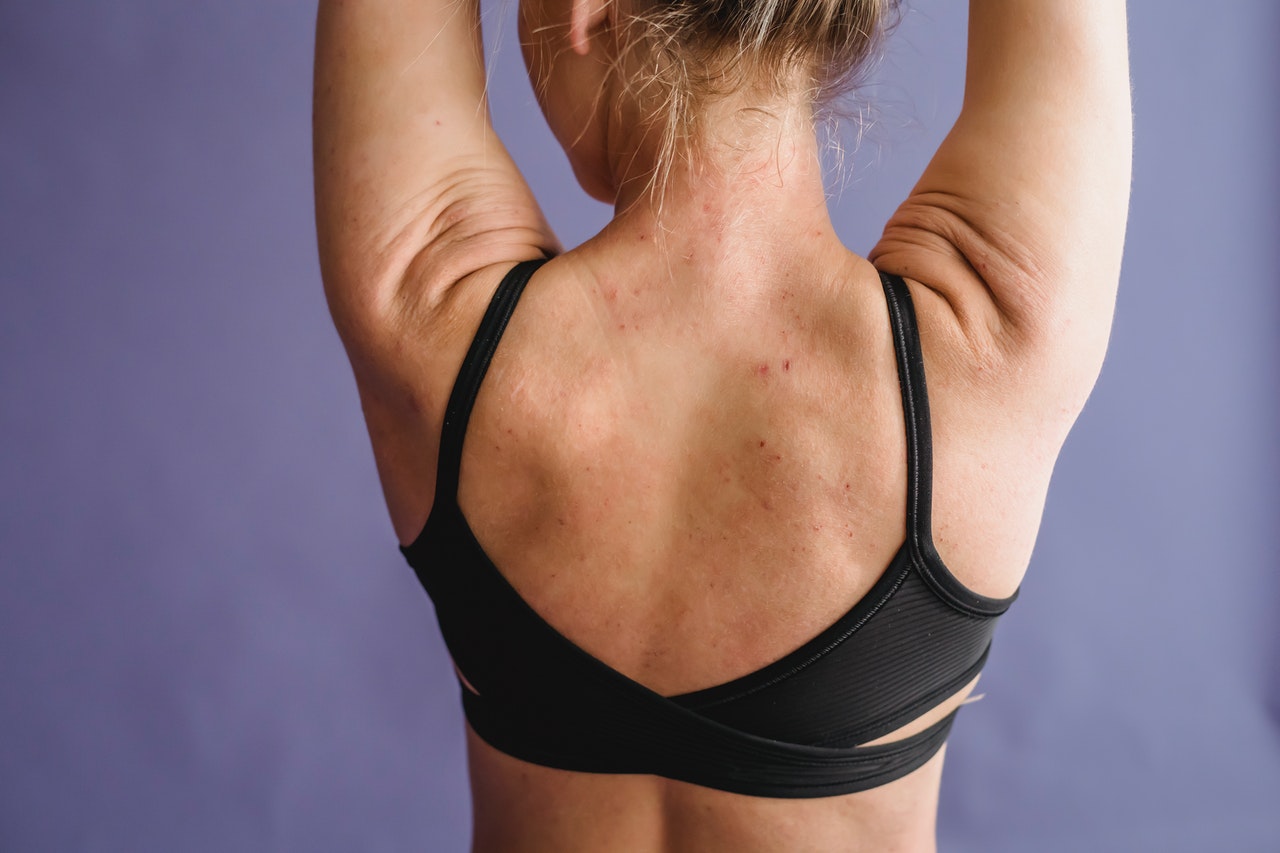
Credit: Marta Wave via Pexels
Liposuction
Liposuction is a surgical procedure that removes stubborn fat deposits from various areas of the body to provide slimmer, contoured results. The standard method for this procedure involves making an incision into the desired area and then inserting a cannula (stainless steel tube). Using the cannula, the surgeon breaks up the fatty tissue and then extracts it using suction. Once the fatty tissue is removed, the surgeon closes the incisions and completes the procedure.
Other Types of Liposuction
Standard liposuction has been practiced by surgeons for decades, but there are additional modern methods of liposuction that offer different benefits for patients, like skin tightening features and shorter recovery times. Consider the three effective types of liposuction that we offer at our GraceMed clinics:
SmartLipo:
SmartLipo is a type of laser-assisted liposuction. The laser in smart lipo liquefies the fatty tissue in a targeted area, making it easier for the surgeon to suction out. The technique causes less trauma to the surrounding tissue, leading to a shorter recovery time afterward. The laser also stimulates collagen and elastin production in the skin, which can make it smoother and firmer than before.
SlimLipo:
SlimLipo is very similar to SmartLipo. It’s another gold standard laser lipolysis strategy. It carries the same benefits, like less bruising/swelling, shorter recovery time and skin tightening. The main difference with SlimLipo is that it uses two distinct wavelengths to target fat and skin, while SmartLipo has one.
Body-Jet Lipo:
Body-Jet liposuction is water-assisted liposuction. It uses a gentle jet of water to irrigate fat and remove it from the targeted area. One of the biggest advantages of this method is that it creates less swelling and bruising, so patients require less recovery time after the surgery.
The Advantages of Liposuction
Removing Fatty Tissue:
Liposuction is an effective way to remove fatty tissue. It’s an ideal option for patients that can’t seem to shed those final few pounds and reach their goal weight, even when they’re following a healthy diet and exercise regimen.
Versatility:
Liposuction doesn’t just cover one area of the body. It can be used on any part of the body that has removable fatty tissue. It can treat the stomach, thighs, calves, buttocks, back, hips, arms, neck and more.
Liposuction is combined with certain surgical procedures to enhance the results. For example, a patient could ask for liposuction on the axillary (underarm) tissue when getting a breast reduction. In fact, liposuction for breast reduction often works as an additional component of the surgery.
Finally, liposuction is a key part of fat transfer procedures, like the Brazilian Butt Lift (BBL) or fat transfer breast augmentation. A surgeon uses liposuction to extract the fatty tissue before reinjecting it into the desired area.
Hard-To-Treat Problem Areas:
Liposuction can be a simple solution for areas that don’t seem to benefit from weight loss or targeted exercise. Think of tricky spots like behind the knees, the inner thighs or under the armpits.
One all-too-common problem that it can treat is gynecomastia (male breasts). The feature can be embarrassing and uncomfortable to live with, and difficult to get rid of through lifestyle changes. The most effective way to combat gynecomastia is through plastic surgery. Gynecomastia surgery often involves liposuction to remove the fatty tissue to reduce the breast size and give it a more masculine shape.
The Disadvantages of Liposuction
Cellulite:
Cellulite is the dimpled, puckered look on your skin caused by the fat cells underneath. Cellulite is incredibly common, particularly with women. Approximately 80-90% of women have had cellulite at one point in their lives.
Liposuction may not be the right solution for removing cellulite. Patients that want to treat their cellulite should look into a non-surgical body sculpting treatment like Cellutone. It uses the power of vibration to minimize the appearance of cellulite. We offer this service at our North York clinic.
Not Treating Excess Skin:
One of the main differences between liposuction and tummy tucks is that liposuction doesn’t treat excess skin. Patients who want to deal with loose skin shouldn’t look to this procedure as a solution. Tummy tucks and surgical lifts (arm lifts, thigh lifts and breast lifts) can address this problem.
Causing Loose Skin:
Fatty tissue acts as a cushion underneath the skin. When the cushion is taken away, the skin loses support and looks more relaxed than usual.
This is why we recommend liposuction to candidates that are in good health, have good skin elasticity and are close to their goal weight. Candidates close to their goal weight will need less fatty tissue removed during the surgery. Removing large amounts of fatty tissue will make it harder for the skin to adapt to the change and contract back to its “normal” shape.
These are some other things that patients can do to avoid loose skin post-recovery:
- Opt for liposuction methods that are prized for their ability to tighten up skin during surgery, like Smart Lipo and Slim Lipo.
- Try Renuvion, a minimally invasive skin rejuvenation treatment that’s commonly paired with liposuction procedures.
- Try non-surgical body contouring treatments like Exilis and Thermage after recovery to tighten and tone the skin.
The good news is that patients have lots of options that will help them minimize their chances of developing loose skin during liposuction surgery and after it. This is not a disadvantage that should dissuade a patient from going through the procedure.

Credit: Andrea Piacquadio via Pexels
Recovery for Tummy Tuck vs. Liposuction
Another thing to consider is recovery for a tummy tuck vs. liposuction.
A tummy tuck is serious abdominal surgery and will require a lengthy recovery. It often takes between two to four weeks to recover from the surgery. After six weeks, the average patient will get the green light to resume their normal physical activities.
Liposuction recovery, on the other hand, typically takes less time than with a tummy tuck. Patients will need between seven to fourteen days to recover and four to six weeks to get the green light to resume their regular physical activities.

Credit: Matthew Henry via Burst
Cost of Tummy Tuck vs. Liposuction
What is the cost of a tummy tuck vs. liposuction? The starting price for a mini tummy tuck procedure at GraceMed clinics is $7,000. It will increase when you include other surgeries with the procedure (for example, choosing a tummy tuck and liposuction in a Mommy Makeover).
In comparison, the starting price for liposuction at GraceMed is $2000. With all that said, the cost for liposuction will vary based on your needs and the areas that you want to cover. Combining liposuction with other surgeries will also increase the price.
Which Procedure Should You Choose?
When it comes to liposuction vs. a tummy tuck, which procedure should you choose? The short answer is, it depends! If you want to tone up your abdominal muscles or get rid of loose skin, then a tummy tuck should be your top choice for a procedure. If you only want to get rid of excess fatty tissue and contour your midsection (along with other parts of your body), liposuction is a better option.
It’s common to combine the two procedures! You can have a tummy tuck and liposuction to achieve great results.
When you book a consultation at one of our GraceMed clinics, we will work with you to determine the procedure best suited to your needs.









